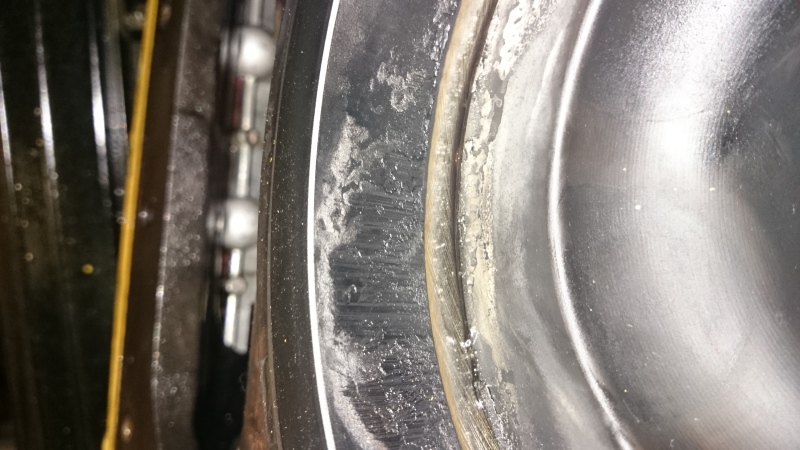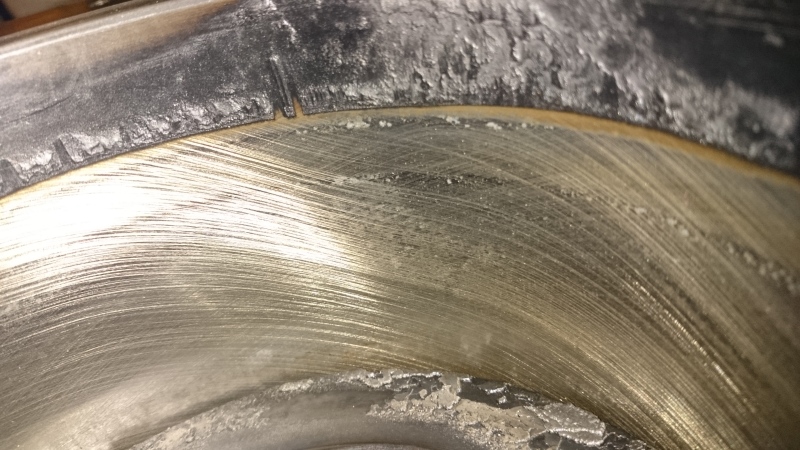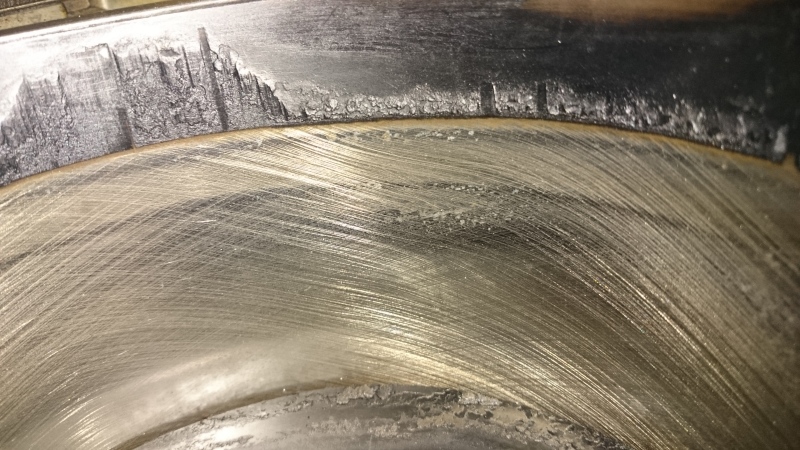Just put the engine back together tonight. My take away is that the deposits are not caused by fuel impingement. Anyways the heads came off because of coolant leaks caused by rotten spacer plates. But we have been having some smoke issues lately. I saw tI he carbon deposits and found them a bit unusual. We rarely pull heads and bring in outside contractors at overhauls so I don't always get a close look at things.
For more info, the engines run Chevron Delo 400 MG 15w40 oil. They are serial number 4TN 3512 engines. They were recently converted to epa tier 2 which involved a firing order change, new cams, and a switch from Abb turbos to Garrett. I'm not happy with any of the Garrett turbos I have in service so I am not ruling them out as a problem either.
And the white spots. They are not pits. Fretting seems the better way to describe them. If I took a sharpened pick and dragged it across the spot it would not snag.
Oddly the turbo on this bank had much oil residue in the outlet ducting while the other had a light coating of soot. I expect at 350F discharge temps most oil residue would burn. I have not had a chance to look into why one duct was oily and the other not.





